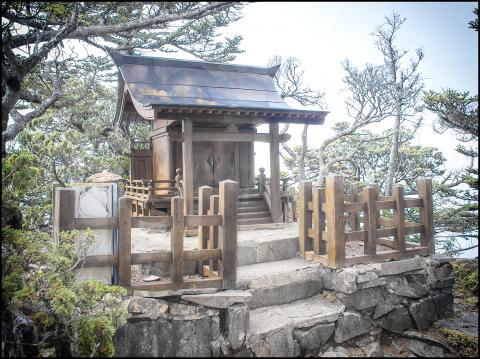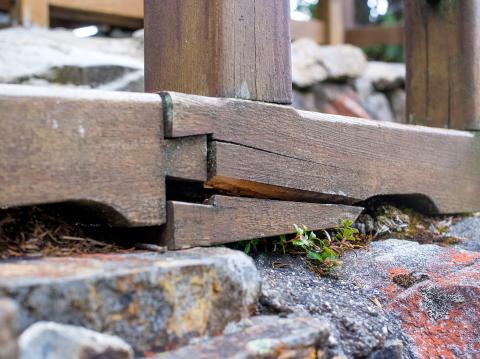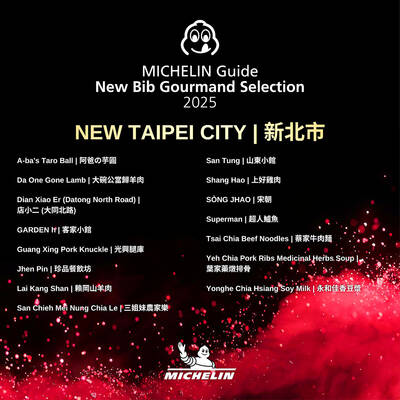When the Japanese became colonial rulers of Taiwan in 1895, they inherited a population of Chinese immigrants and Aboriginal peoples. The first years of Japanese colonial rule included suppression of uprisings. In 1919 the Japanese governor implemented the Doka movement of assimilation; with the outbreak of Second Sino-Japanese War in 1937 came a new policy: the Kominka movement. Kominka was regarded as necessary for the Japanese war effort, to make the Taiwanese colonial subjects identify more strongly with Japan, and not China.
One element of the Kominka movement was to have Taiwanese convert to Shinto, Japan’s indigenous religion of worshipping spirits manifest in natural forms such as trees, rivers and people. Shinto shrines were set up around the country, including some of the high altitude areas such as Jade Mountain and Snow Mountain.
If you visit Jade Mountain West Peak today you will see a Japanese shrine there. This is not the original structure: After Japan ceded control of Taiwan at the end of World War II, many of the shinto shrines around the island were destroyed. The West Peak shrine is a reconstruction commissioned by the Jade Mountain National Park, made entirely of wood and reflecting the Japanese style of the original, repurposed as a shrine to the local spirits.

Photo: Paul Cooper, Taipei Times
照片:台北時報記者古德謙攝
On the day I was there, Taiwanese hikers made a point of praying at the shrine. They thanked the spirits for the good weather, and wished for safe passage down the mountain.
The shrine has a simplistic elegance. Unfortunately, its exposure to the elements has taken its toll. The wood itself is in remarkable condition; the stone base less so. Cracked and broken through temperature alternations, it has become misshapen, warping the wooden railings. The rear right corner post had fallen to the forest floor.
(Paul Cooper, Taipei Times)
.jpg)
Photos: Paul Cooper, Taipei Times
照片:台北時報記者古德謙攝
日本人在一八九五年成為台灣的殖民統治者,當時他們所接管的台灣人民主要由中國移民和原住民組成。在殖民統治的最初幾年,日本政府著重於鎮壓抗日運動;及至一九一九年,日本總督改實施同化政策;隨著一九三七年第二次中日戰爭爆發,日本政府遂推行一項新政策──「皇民化運動」,目的是讓殖民統治下的台灣臣民更加強烈認同日本,而非中國。對於日本的戰事而言,皇民化運動可說是勢在必行。
皇民化運動的元素之一,是要求台灣人改信神道教,也就是日本原生的泛靈宗教,崇拜在自然界形態中──包括樹木、河川,以及人類──顯現其靈的世間萬物。神道教的神社遂開始設立於台灣各地,就連玉山和雪山等高海拔地區也不例外。
今天,在拜訪玉山西峰的路上,你還能看見一座日式神社,只是該建物現狀已非最初的結構:日本在第二次世界大戰尾聲放棄台灣主權後,台灣本島各地許多神道教神社都被拆毀。今日玉山西峰的這座神社其實是玉山國家公園委託重建,建築整體全以木造完成,反映原建物的日式風格,並且重新改作為山神祠。

Photos: Paul Cooper, Taipei Times
照片:台北時報記者古德謙攝
在我造訪西山神祠當天,台灣的登山客們特地向神祠合掌膜拜。他們感謝山神帶來好天氣,也祈求下山的路途平安順利。
這間山神祠有著簡約古樸的高雅氣息。可惜的是,建築因暴露於自然環境中而付出了代價。木造結構的保存狀況極佳,但石造地基的狀況就沒有這麼好了。山上的氣溫劇烈變化,導致石頭龜裂破損,造成基座變形,連帶影響木造圍欄歪斜。右後方角落的欄杆亦傾倒在林間的地面上。
(台北時報章厚明譯)

If you think you’re cool and know all the latest trends, then here’s a question for you: What does the word “brat” mean? If you said something like, “a child who behaves badly or is annoying or rude,” you might not be as hip as you think. This four-letter word now has a new definition that has become quite popular. Its popularity caught the eye of Collins Dictionary, which crowned it as “Word of the Year 2024.” According to this new meaning of brat, it is used as an adjective to describe someone who has a confident, independent, and hedonistic

A: Seeing as the 2025 Michelin Guide extended to New Taipei City and Hsinchu City and County, it’s hard to believe that none of the restaurants won a Michelin star. B: Some fine establishments — like Hsinchu’s A Cut steakhouse — surely deserve the honor. A: Michelin-starred restaurants have good quality food, but some of them are so pricey. B: I once had barbeque pork at a starred restaurant that set me back NT$4,800. That’s even higher than my weekly food budget. A: No wonder several of them have closed down recently, as high prices and the tariff war are scaring off

A: The Michelin Guide Taiwan announced the 2025 Bib Gourmand eateries and starred restaurants last week. B: What were the highlights this year? A: In addition to Taipei, Taichung, Tainan and Kaohsiung, New Taipei City and Hsinchu City and County were included for the first time. B: As a New Taipei resident, I can’t wait to try all the awarded local delicacies. Should we start from the more affordable Bib Gourmand selection? A: Sure, New Taipei and Hsinchu each boast 15 Bib Gourmand eateries now, including some famous establishments such as San Tung restaurant. A: 2025《米其林指南》近日公布「必比登推介」和星級餐廳。 B: 今年的名單有哪些亮點? A: 除了台北、台中、台南、高雄,今年加入新北、新竹縣市! B: 身為新北人,我真想吃遍當地的美食,我們要不要從平價的必比登先開始? A: 好啊新北、新竹各有15家入選必比登,像山東小館等知名餐廳都有上榜唷。 (By Eddy Chang, Taipei Times/台北時報張迪)

Continued from yesterday(延續自昨日) https://www.taipeitimes.com/News/lang Interestingly, one of the words Collins Dictionary discarded was selected by Oxford University Press (OUP) for its own Word of the Year. On its Web site, the publishing house of the University of Oxford stated it had conducted a public poll in which over 37,000 people participated. The voters, along with OUP’s language experts, settled on the term “brain rot.” One main reason for the decision was the vast amount of interest in the noun during 2023 and 2024, with its usage increasing by 230 percent. In fact, brain rot is not a new term by any